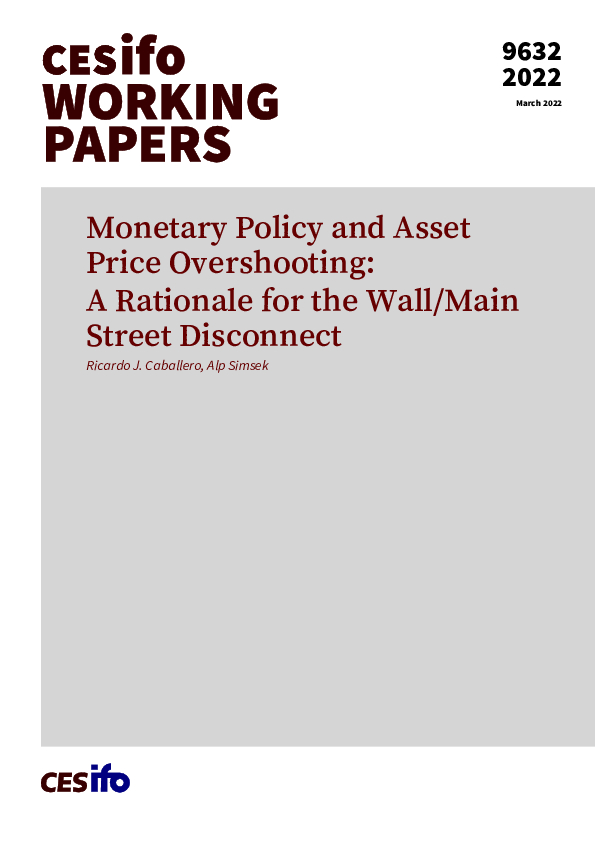Monetary Policy and Asset Price Overshooting: A Rationale for the Wall/Main Street Disconnect
CESifo, Munich, 2022
CESifo Working Paper No. 9632

We analyze optimal monetary policy and its implications for asset prices, when aggregate demand has inertia and responds to asset prices with a lag. If there is a negative output gap, the central bank optimally overshoots aggregate asset prices (asset prices are initially pushed above their steady-state levels consistent with current potential output). Overshooting leads to a temporary disconnect between the performance of financial markets and the real economy, but it accelerates the recovery. When there is a lower-bound constraint on the discount rate, overshooting becomes a concave and non-monotonic function of the output gap: the asset price boost is low for a deeply negative initial output gap, grows as the output gap improves over a range, and shrinks toward zero as the output gap improves further. This pattern also implies that good macroeconomic news is better news for asset prices when the output gap is more negative. Finally, we document that during the Covid-19 recovery, the policy-induced overshooting was large−sufficient to explain the high levels of stock and house prices in 2021.
Fiscal Policy, Macroeconomics and Growth
Monetary Policy and International Finance